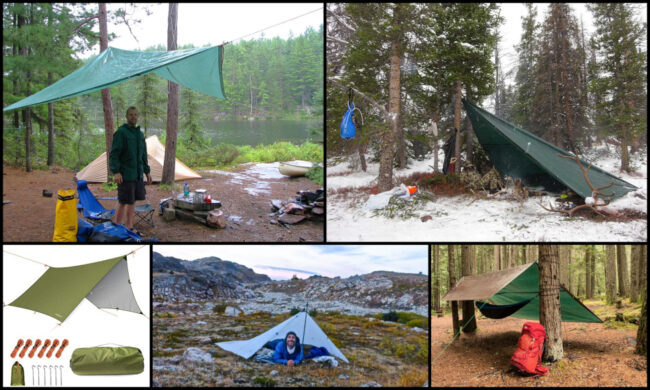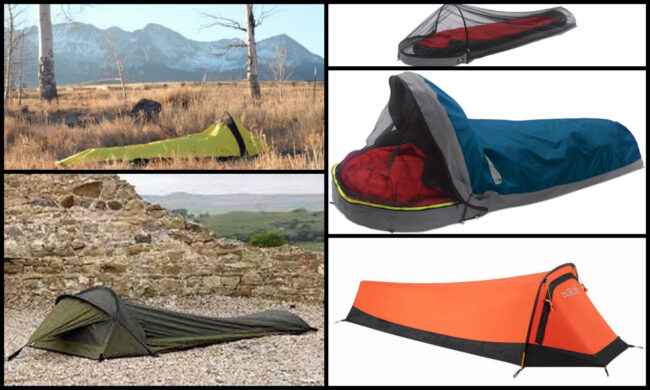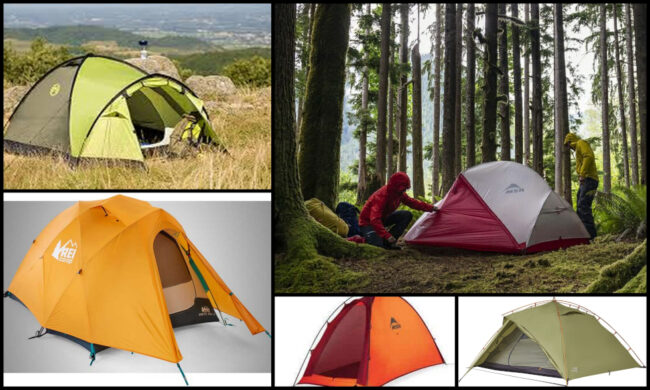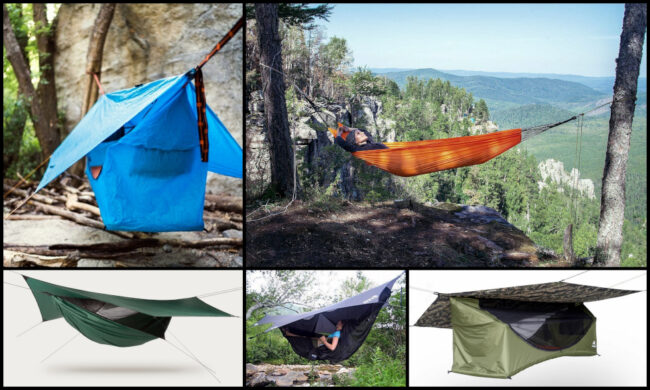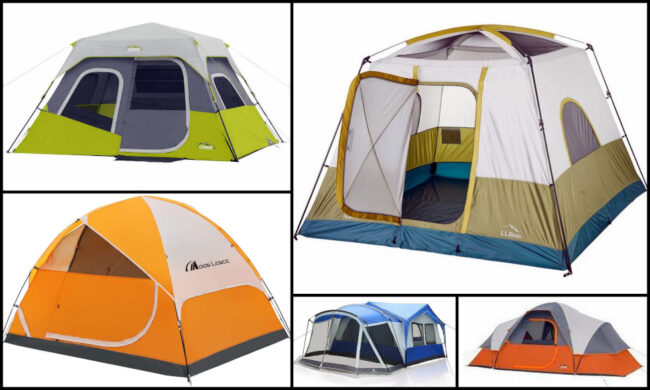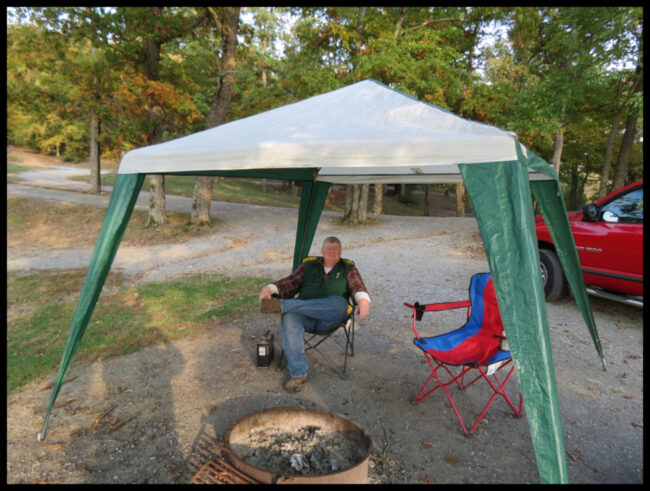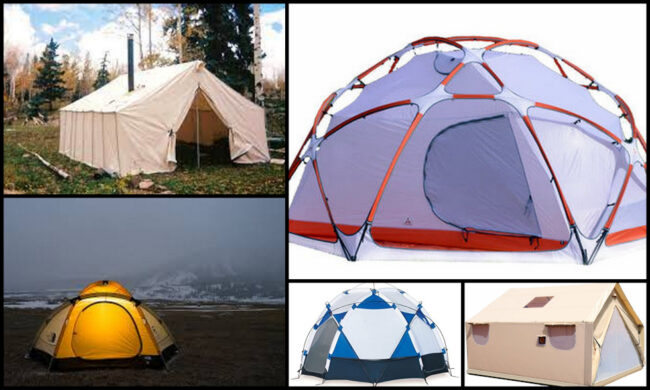Shelter
As with backpacks, you have hundreds of choices in this department. The type of shelter that you select will depend heavily upon the application it’s going to be used for. For example, the shelter you want to carry on a backpack or in a kayak will vary considerably from the type you’d want for car camping. I’ll try to discuss each type in enough detail to give you an idea of what to look for.
Prices will vary from just a few dollars (depending on what you get) to hundreds of dollars.
Let’s start off with the backpacker and kayak crowd. In each case you’ll want an adequate shelter, but with minimal weight and packing space.
In recent years many explorers have gone back to Old School camping and in many cases opted for the use of tarps, which nowadays are made out of a variety of materials. The most popular for backpackers and kayakers is the ultralight tarp, made out of some form of nylon with multiple tie-on points for guy lines. You can still get canvas and oiled canvas, but those tend to be used more for car campers and winter campers who are pulling their gear behind them on sleds. I love the idea of tarp camping, but you have to be aware that there are some places you really don’t want to use them. For example, I live in Kentucky and tarp camping here could be a disaster. Not only do we have several species of snakes and bees and wasps and hornets, but the biggest danger here are the ticks. If you’re sleeping out in the open, I will promise you that you’ll wake up covered in them. For the record, we’ve had countless recorded cases of Lyme Disease and Rocky Mountain Spotted Tick Fever. I’d have no problem sleeping some places under a tarp, but not here.
The bivy sack is the smallest and lightest wrap-around shelter available. They are only large enough for one person, usually weigh less than three pounds and are tiny in pack space (or the area they take up in a kayak cargo compartment). The down side to these shelters is that you have no extra room whatsoever. It’s like sleeping in a tube. There’s no room to move around, nor any space for equipment storage. If you don’t like confined space, DO NOT get a bivy.
The next step up is the ultra-light tent. These come in a variety of shapes and sizes. Personally, I like a self-standing tent with at least one vestibule (area outside the sleeping chamber for gear storage). I like to store my pack and other gear in the vestibule. It makes life much nicer if you wake up in a rainstorm. Your gear is dry and readily at hand. One to three people can usually sleep in these with relative comfort. They usually weigh anywhere from 4 to 7 pounds. These tents are probably the most popular choice of the ultralight crowd. They are light, give good protection under most weather conditions and keep the creepy crawlers out of your sleeping space.
A new trend has come to light over the last few years, hammock tent camping. These ultralight systems hang on trees, or in some cases can be used with trekking poles or available wooden poles as a ground tent. They come in a variety of configurations. As far as I can tell, all offer the protection of bug netting and a rain fly that you can choose to use, or not use. Some wrap tightly around you and in recent years manufacturers have added poles to add shoulder and foot space, keeping the fabric away from the body. Some even lie flat while others have a definite droop. In almost all cases you’ll want a compatible sleeping pad to go with the hammock, both for comfort and in many cases insulation from cold air. The biggest drawback to a hammock tent is that in really cold and windy weather it can get chilly, at least without the proper insulation pad and/or sleeping gear. With the proper accessories, you can use these in any conditions, even sub-zero temperatures.
I’ve only hammock tent camped a couple of times and honestly didn’t like it because I felt like I was being smothered by the closeness of the side walls. But that was decades ago and with the upgrade to flat hammocks with the spacer bars, I finally broke down and bought a flat hammock (the Haven Tent) and am happy to report that my opinion of hammock camping has been changed 180°. My Haven Safari is by far the most comfortable sleeping system I’ve ever used while camping. It sets up easily, has plenty of room, comes with inside pockets to keep gear in and is super comfortable. Another nice feature is that the mattress has a thermal factor of 4 and is even comfortable in cold weather. They’re great as far as entry and exit and are a lot easier to get out of vs. a ground tent.
The ONLY disadvantage that I’ve run into is that you can’t always find properly-spaced trees where you want them. But, the Haven Tent Company is in the process of developing a stand for their hammocks that will allow you to set up anywhere you want to. If their stand is as good as their tents, I’ll be buying one for mine.
The next are tents that are suitable for car camping, or as I call them “family tents”. These have virtually no limitation in size or cost. Having said that, I prefer one of two types; either the self-standing dome tent or the multi-room tents. When I go car camping, I use a 10’ x 10’ dome tent. It has windows on three sides with the door being on the fourth. It has a partial rain fly and floor. My tent is large enough for two army-style cots and other gear to be stored inside. FYI, I also take a separate vinyl canopy with me to put over the fire pit. DO NOT use nylon for this as the heat from your campfire could melt it. I’ve had no problem with a vinyl canopy that’s about 7 feet above the fire pit. One great advantage to the fire pit canopy is that it creates a warm zone. You’ll find it a good 10° to 20° warmer under the canopy vs. the outside temperature, wind-speed dependent. It’s the one “luxury” item I take car camping and I set it up every time. I can’t count the number of times I’ve set up in a commercial campground and could sit outside under the canopy, even in a pouring rain. The other campers on the other hand had to escape to their RV’s or tents to stay dry.
If you’re planning a long duration backcountry experience you may want to invest in an Expedition Tent. These are true 4-season tents and are made up of much heavier material. They’re designed to stand up to the worst weather condition, whether it be heavy precipitation or heavy winds. Many even offer the option of installing a wood-burning stove to keep you warm and/or to cook on. The price is considerably higher, but if you’re going to be out for a prolonged period, they’re well worth the investment.
With so many people enjoying the outdoors these days it was only a matter of time before a whole new shelter technology came to be, truck tents. These are specifically designed to install on pickup trucks and offer the opportunity to “camp out” but not have to pitch a tent on the ground. You literally sleep in the truck bed. Initially this sounds like a perfect solution, but like with any other shelter system there are some disadvantages. The most significant is that the metal of the truck bed is outstanding at getting cold because of the air flow under the vehicle. Also, truck beds are “ribbed” and sleeping on a ribbed surface is pure torture. All of these shortcomings are easily fixed with simple solutions. If you’re going to sleep on the truck bed, add a rubber pad and/ or board to level it out, and of course use a sleeping pad. But, if you want to actually be comfortable, just get a cot to sleep on. 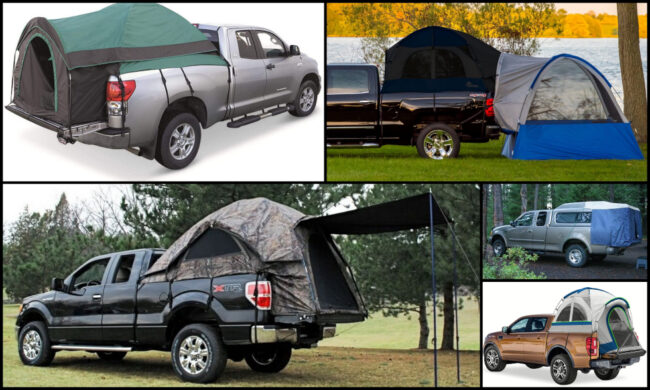
Most tents that you’ll find on the market are made of nylon with either aluminum or fiberglass pole frames. Either one is suitable for most camping conditions. Backpackers generally prefer aluminum frame tents as they’re more lightweight and stronger. They tend to cost a bit more, but you’ll be glad you invested the extra money when the winds pick up as they’re more rigid and handle extreme conditions better.
Last modified on: July 27th 2023.
